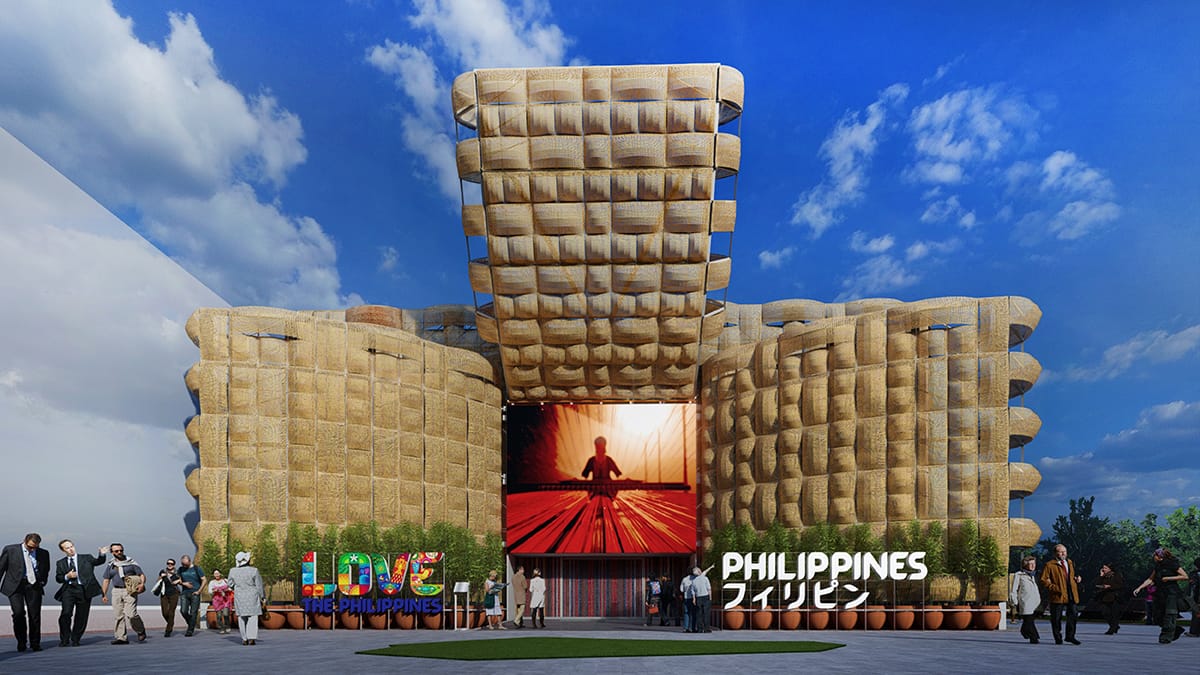By Florenda Corpuz
TOKYO – Philippine Ambassador to Japan Mylene Garcia-Albano met with the media on March 10 at Kudan, her official residence, to discuss the country’s participation in Expo 2025.
During the dialogue, she provided updates on the Philippine Pavilion, which will debut April 13 and remain open through Oct. 13 on Yumeshima Island in Osaka.
“This is a project that not only highlights our country’s rich heritage and creativity but also underscores the deep cultural and diplomatic ties between the Philippines and Japan,” Garcia-Albano said.
“Our participation in Expo 2025 is a testament to our nation’s commitment to fostering dialogue, cooperation and mutual understanding through culture, tourism and trade. The Philippines has always valued its close relationship with Japan, our trusted neighbor and longtime friend. Through this pavilion, we seek to strengthen people-to-people ties, showcase our cultural identity and contribute to the global conversation on sustainability and innovation,” she added.
Designed by Carlo Calma, the Philippine Pavilion follows the theme “Nature, Culture and Community: Woven Together for a Better Future,” or simply “Woven.” It represents the interwoven narratives of the Filipino people, celebrating the country’s resilience, creativity and deeply rooted traditions. The space itself is immersive, inclusive and deeply connected to sustainability.
Throughout Expo 2025, visitors can expect a dynamic, multisensory experience highlighted by three key features: the first-ever live performance façade at a World Expo, the largest-ever collaboration of Filipino weavers, showcasing more than 200 handwoven textiles, and a multisensory journey enhanced by AI-powered communal celebrations, complemented by live performances from dancers of the Cultural Center of the Philippines.
The Pavilion will champion sustainability. Plans are underway to repurpose the structure after the expo, with key elements being relocated to the National Museum of the Philippines, ensuring long term accessibility for the Filipino public.
In an interview with Filipino-Japanese Journal (FJJ), Garcia-Albano discussed the Pavilion’s potential impact.
“The Philippines is very much involved in this worldwide movement to work with nature. We will not only use the structure here, but we also plan to repurpose it. It will also give the Japanese people, as well as everyone who visits, the opportunity to experience various aspects of Philippine culture,” she said.
She also expressed her hope that the Pavilion would encourage more Japanese visitors to explore the Philippines. “We would like to use this occasion to showcase our tourism in the Philippines and invite more of our Japanese friends to come and experience it.”
The Philippine Organizing Committee (POC), led by the Department of Tourism (DOT) and supported by the Tourism Promotions Board (TPB), is overseeing the country’s participation in Expo 2025.
The TPB told FJJ last January that the structure for the Pavilion was fully completed by the end of 2024, with exterior work finished. While interior construction is ongoing, the Pavilion’s façade is nearing completion, and the current phase involves cladding and incorporating key design elements. The Philippines is one of the first three Type A Pavilion countries to receive a Certificate of Completion, signifying compliance with all building regulations.
The POC is finalizing details for the Pavilion’s grand opening and preparing for Philippine National Week, which will take place from June 7 to 12.
(Photo courtesy of Tourism Promotions Board)


